Comments / Questions (228)
![]() Vibeke Larsen wrote:
Vibeke Larsen wrote:
Kan ikke længere finde mønster A3, da Jeg strikkede ryg og forstykke - var mønsteret i opskrift nu er det væk. Derudover er der i ærme opskrift ikke nævnt at man efter A4 - strikker A1 før A2 selvom det er tydeligt på billede af modellen. Mvh Vibeke
03.01.2019 - 21:39DROPS Design answered:
Hei Vibeke. diagram A.3 ligger rett under A.6 (altså nest øverst). Vi har sjekket, og den ligger der i den danske oppskriften også. Nederst på ermet strikkes A.4, og så strikkes A.2. Når det er sagt så er A.4 litt forskjellig i de forskjellige størrelsene. Modellen på bildet har på seg en genser i størrelse S eller M, og om du ser på A.4 diagrammet for denne størrelsen ser du at de skrå stripene med vrangmasker inngår i A.4. Noen ganger blir det litt forskjellig mønster i de ulike størrelsene for at det skal gå opp. God fornøyelse
08.01.2019 - 15:02
![]() Martha wrote:
Martha wrote:
Prachtige trui! Tip: delen met alleen beige, breien met naalden 4
30.12.2018 - 21:25
![]() Sarah wrote:
Sarah wrote:
Bonjour, je suis bloquer après le diagramme A.4 de la manche en taille S; je doit faire le motif à la place de A.4b et ajuster le motif mais je ne comprend pas trop comment ajuster le motif pouvez vous m'aidez ?
25.12.2018 - 21:37DROPS Design answered:
Bonjour Sarah, en taille S, vous tricotez A.4a (= 2 mailles), répétez 3 x A.1b (= 12 m chacun) et terminez par A.4 c (= 2 m). Je ne suis pas bien sûre de comprendre votre question, pouvez-vous reformuler? Merci.
02.01.2019 - 09:40
![]() Birgitte wrote:
Birgitte wrote:
Is het patroon goed te doen voor iemand die maar af en toe breit?
23.12.2018 - 17:38DROPS Design answered:
Dag Brigitte,
Dit patroon valt niet onder de makkelijke patronen, maar in principe zijn alle patronen goed te volgen als je het patroon eerst goed doorleest en eventueel een proeflapje maakt in patroon. Bekijk ook de video's die bij het patroon staat. Of het makkelijk voor iemand te doen is, is natuurlijk ook heel persoonlijk.
01.01.2019 - 20:36
![]() Anne Lise Weigand wrote:
Anne Lise Weigand wrote:
Ich bräuchte nur 50 gr. von karisma schokoladebraun. wie teuer kommt mir der porto. gruß anne lise
18.12.2018 - 14:13DROPS Design answered:
Liebe Frau Weigand, nehmen Sie bitte Kontakt mit Ihrem DROPS Laden auf - siehe Liste. Viel Spaß beim stricken!
18.12.2018 - 14:49
![]() Sandy wrote:
Sandy wrote:
Hab ihn gestrickt! Ist fertig und echt genial! Allerdings müsste ich echt 1000 mal die Anleitung lesen! Nicht einfach🙈
16.11.2018 - 23:05
![]() Ulli wrote:
Ulli wrote:
Grösse 46 in Deutschland entspricht das xxl ? Lieben Gruss und Danke vorab fuer die info
28.10.2018 - 00:24DROPS Design answered:
Liebe Ulli, alle Maßen für jede Größe finden Sie in der Maßskizze. Am besten die Maßen von einem ähnlichen Pullover, die Sie gerne haben, mit diesen Maßen vergleichen - hier lesen Sie mehr über Größe und Masse. Viel Spaß beim stricken!
29.10.2018 - 08:10
![]() Birthe Lindaa wrote:
Birthe Lindaa wrote:
Desværre fik jeg sendt nedenstående som en kommentar, men det er et spørgsmål. Derfor gensender jeg det: Jeg vil gerne strikke denne trøje med Viking Cream, da jeg har fået garn til en trøje - men desværre ingen opskrift. Dette garn strikkes med pinde 5½-7. Hvordan kan jeg matche opskriften?
27.10.2018 - 10:19DROPS Design answered:
Hej Birthe, vi kender desværre ikke til Viking Cream, men du finder masser af opskrifter i vores mønsterbibliotek som du kan strikke på pinde 5,5-7. Søg på bluser og vælg garngruppe C. God fornøjelse!
30.10.2018 - 11:06
![]() Birthe Lindaa wrote:
Birthe Lindaa wrote:
Jeg vil gerne strikke denne trøje med Viking Cream, da jeg har fået garn til en trøje - men desværre ingen opskrift. Dette garn strikkes med pinde 5½-7. Hvordan kan jeg matche opskriften?
27.10.2018 - 10:17
![]() Ingrid wrote:
Ingrid wrote:
Hei! Jeg strikker ermene nå, og er kommet midt i A3, der det står jeg skal felle (strikker L). Skal jeg lage hull til å feste denne på bolen allerede nå, før jeg har strikket den orange delen av mønsteret? Da blir i så fall ermene veldig korte, og det ser heller ikke ut som om de har gjort det slik på bildet.
13.10.2018 - 18:11
Valdres#valdressweater |
||||||||||||||||
 |
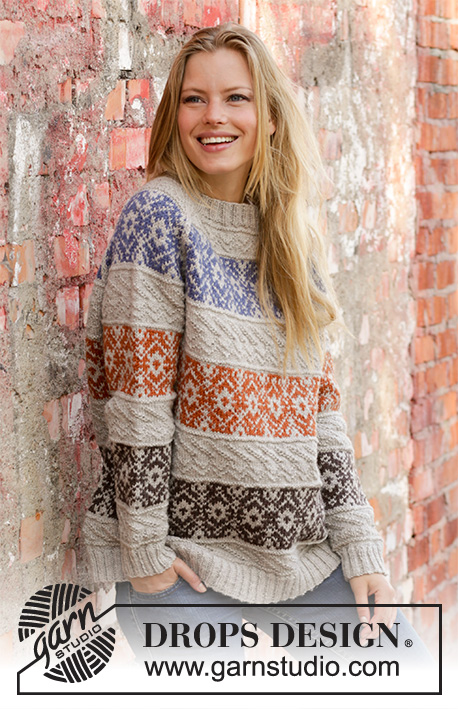 |
|||||||||||||||
Knitted jumper with raglan in DROPS Karisma. The piece is worked bottom up with Nordic pattern and textured pattern in stripes. Sizes S - XXXL.
DROPS 197-1 |
||||||||||||||||
|
------------------------------------------------------- EXPLANATIONS FOR THE PATTERN: ------------------------------------------------------- PATTERN: See diagrams A.1 to A.6. Choose diagram for your size. DECREASE TIP (evenly spaced): To work out how to decrease evenly, count the total number of stitches on the needle (e.g. 260 stitches) and divide by the number of decreases to be made (e.g. 44) = 5.9. In this example, work together approx. each 5th and 6th stitch. KNITTING TIP-1: To avoid the knitting tension becoming tighter when working Nordic pattern, it is important that the strands at the back of the piece are not tight. You can use a size larger needle when working pattern if this is a problem. KNITTING TIP-2 (for yoke): If the knitting tension is not right in height and you work more rows on 10 cm than described in the text, the yoke will be too short and the armholes too small. This can be adjusted for by working 1 extra row of stocking stitch regularly on the yoke. INCREASE TIP (for sleeves): Work until there are 2 stitches left before the marker thread, make 1 yarn over (= 1 stitch increased), knit 4 (the marker thread sits in the middle of these 4 stitches), make 1 yarn over (= 1 stitch increased). On the next round knit the yarn overs twisted to avoid holes. RAGLAN: Decrease to raglan on each side of each A.5 as follows: Decrease 1 stitch after A.5 as follows: Slip the last stitch in A.5, knit 1, pass the slipped stitch over the knitted stitch (= 1 stitch decreased). Decrease 1 stitch before A.5 as follows: Work until there is 1 stitch left before A.5, knit the next 2 stitches together (= 1 stitch decreased). In other words you decrease 2 stitches by each A.5 and a total of 8 stitches on the round. ------------------------------------------------------- START THE PIECE HERE: ------------------------------------------------------- JUMPER - SHORT OVERVIEW OF THE PIECE: The piece is worked in the round with circular needle, bottom up. The sleeves are worked with short circular needle/double pointed needles. The pieces are placed together and the yoke is worked in the round. BODY: Cast on 260-288-316-344-376-400 stitches with circular needle size 3.5 mm and light oak. Work rib (= knit 2 / purl 2) for 5 cm. Change to circular needle size 4.5 mm and knit 1 round where you decrease 44-48-52-56-64-64 stitches evenly on round – read DECREASE TIP = 216-240-264-288-312-336 stitches. Knit 1 round as follows: Insert 1 marker in the first stitch, knit 107-119-131-143-155-167 stitches, insert 1 marker in the next stitch, knit to end of round. The markers mark the sides of the piece. Then work A.1 over all stitches (= 18-20-22-24-26-28 repeats of 12 stitches). REMEMBER THE KNITTING TENSION! When A.1 has been worked 1 time in height, insert 1 marker in the middle of the round (you will measure from this marker later). Then work A.2 over A.1- read KNITTING TIP-1. When A.2 has been worked 1 time in height, work A.3 over A.2. When you have worked as far as the arrow in A.3 (see arrow for your size) work the next round in A.3 as follows: Cast off 4 stitches, work the next 101-113-125-137-149-161 stitches as before, cast off the next 7 stitches, work the next 101-113-125-137-149-161 stitches as before, cast off the last 3 stitches. The piece measures approx. 32-29-32-32-31-30 cm from the marker (approx. 43-40-45-45-46-45 cm whole length). Lay the piece to one side and work the sleeves. SLEEVES: The piece is worked in the round with double pointed needles; change to short circular needle when necessary. Cast on 48-52-52-56-56-60 stitches with double pointed needles size 3.5 mm and light oak. Work rib (= knit 2 / purl 2) for 5 cm. Change to double pointed needles size 4.5 mm and knit 1 round where you decrease 8-10-8-10-8-10 stitches evenly on round = 40-42-44-46-48-50 stitches. READ THE WHOLE SECTION BEFORE CONTINUING: You work a pattern of approx. 8-8-5-5-4-4 cm, if you wish to adjust the length of the sleeve, do it now – see below. Then work the same pattern stripe as on the body (from the marker to the armhole = approx. 32-29-32-32-31-30 cm), i.e. the whole sleeve should measure approx. 45-42-42-42-40-39 cm. Work as follows: Insert 1 marker thread at the beginning of the round (= mid under sleeve). Work 1 round in stocking stitch, then work the next round as follows: Work A.4a (= 2-3-4-5-0-1 stitches), A.4b (= 12 stitches) a total of 3-3-3-3-4-4 times in width, A.4c (= 2-3-4-5-0-1 stitches). Continue until A.4 has been worked 1 time in height – NOTE: if you would like a longer sleeve, repeat the 2 rows marked with a star to desired length before continuing with the next round in A.4. If you would like a shorter sleeve, just work the desired number of rounds of A.4, but work a minimum of 1 of the purled rounds. – AT THE SAME TIME when the piece measures 10-9-9-10-12-12 cm increase 1 stitch on each side of the marker thread (= 2 stitches increased) – read INCREASE TIP! Increase like this every 2-1½-1½-1½-1-1 cm a total of 16-21-20-19-24-23 times = 72-84-84-84-96-96 stitches. The stitches in A.4a and A.4c and the increased stitches are worked into pattern A.4b as you go. When A.4 has been worked 1 time in height, work A.2 (= 12 stitches) over all stitches – A.2 is worked over A.4b and is adjusted out to each side; the increased stitches are worked into the pattern as you go. When A.2 has been worked 1 time in height, work A.3 (= 12 stitches) over A.2. When all the stitches under the sleeve are increased, work A.3 a total of 6-7-7-7-8-8 times in width. When you have worked as far as the arrow in A.3, work the next round as follows: Cast off 4 stitches, work the next 65-77-77-77-89-89 stitches as before, cast off the last 3 stitches. The sleeve measures approx. 45-42-42-42-40-39 cm. Work 1 more sleeve in the same way. YOKE: Place the sleeves on the same circular needle as the body, where you cast off stitches for the armholes = 332-380-404-428-476-500 stitches. Start the round in the transition between right sleeve and back piece. Work as follows: * A.5 (= 2 stitches, raglan line), continue with A.3 as before over the next 97-109-121-133-145-157 stitches (= front/back piece), A.5 (= 2 stitches, raglan line), work pattern A.3 as before over the next 65-77-77-77-89-89 stitches (= sleeve) *, work from *-* a total of 2 times – read KNITTING TIP-2. Continue this pattern and decrease to RAGLAN – read description above, every 2nd round a total of 27-31-32-33-37-39 times. When A.3 has been completed in height, work A.6 (= 12 stitches) over A.3. After the last decrease to raglan there are 116-132-148-164-180-188 stitches on the round. Continue until A.6 has been completed. The yoke measures approx. 20-23-24-25-27-28 cm. You can now work an elevation in the back of the neck so that the yoke is slightly higher at the back. This elevation can be left out; the neck is then the same both front and back. Work elevation in back of neck or go straight to working neck if you do not want an elevation. ELEVATION IN BACK OF NECK: Skip this section if you do not want an elevation. Insert 1 marker at the beginning of the round (this marks the start of the round after the elevation has been worked). Continue with light oak and knit to mid back, insert 1 marker. Start from the right side and knit as far as 30-30-34-34-40-40 stitches past the marker, turn, tighten the strand and purl 60-60-68-68-80-80 stitches back. Turn, tighten the strand and knit 54-54-61-61-72-72 stitches, turn, tighten the strand and purl 48-48-54-54-64-64 stitches back. Turn, tighten the strand and knit 42-42-48-48-56-56 stitches, turn, tighten the strand and purl 36-36-42-42-48-48 stitches back. Turn, tighten the strand and knit 30-30-35-35-40-40 stitches, turn, tighten the strand and purl 24-24-28-28-32-32 stitches, turn, tighten the strand and knit to mid back. Cut the strand. The round now starts at the marker, i.e. the transition between right sleeve and back piece. NECK: Continue with light oak and work the next round with decreases as follows: Knit * 40-46-54-58-66-70 stitches and decrease 0-6-12-13-19-22 stitches evenly over these stitches – remember DECREASE TIP, knit together the next 18-20-20-24-24-24 stitches 2 and 2 (= 9-10-10-12-12-12 stitches decreased) *, work from *-* a total of 2 times = 98-100-104-114-118-120 stitches. Change to circular needle size 3.5 mm and work the next round as follows: * Knit 2, purl 2, knit 1, 1 yarn over (= 1 stitch increased), purl 2, knit 2, 1 yarn over (= 1 stitch increased), purl 1 *, work from *-* until there are 8-0-4-4-8-0 stitches left, work rib (= knit 2 / purl 2) over the remaining stitches = 116-120-124-136-140-144 stitches. The yarn overs are worked twisted in rib (i.e. knit 2 / purl 2) on the next round to avoid holes. Cast off with knit over knit and purl over purl when the rib measures 3 cm. ASSEMBLY: Sew the openings under the sleeves in the outermost loop of the outermost stitch. |
||||||||||||||||
Diagram explanations |
||||||||||||||||
|
||||||||||||||||
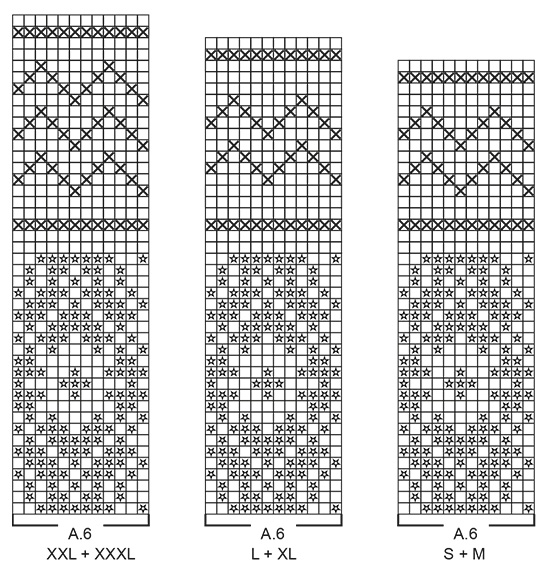 |
||||||||||||||||
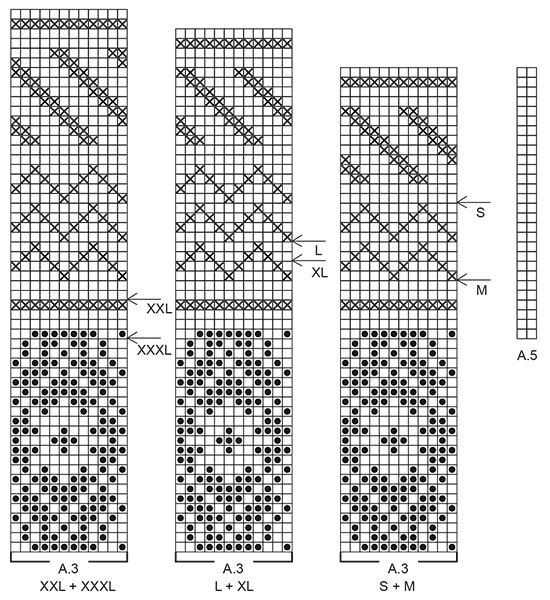 |
||||||||||||||||
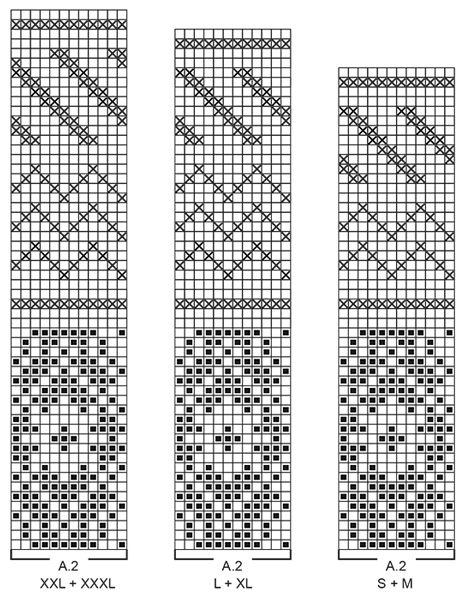 |
||||||||||||||||
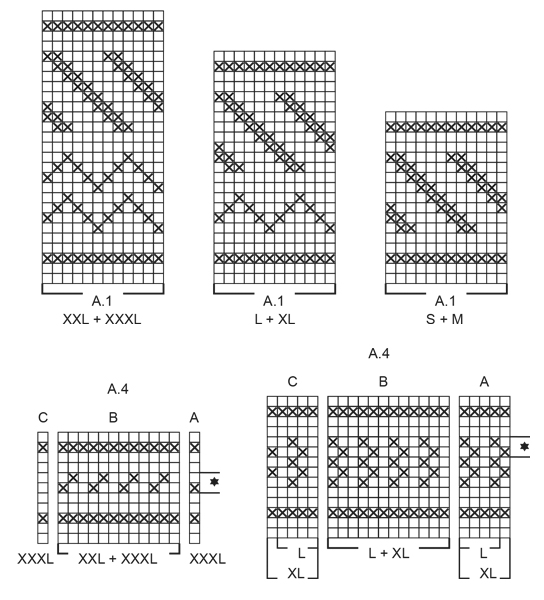 |
||||||||||||||||
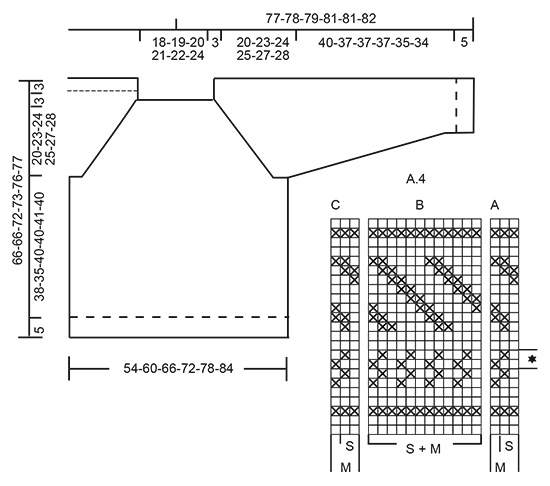 |
||||||||||||||||
Have you finished this pattern?Tag your pictures with #dropspattern #valdressweater or submit them to the #dropsfan gallery. Do you need help with this pattern?You'll find 30 tutorial videos, a Comments/Questions area and more by visiting the pattern on garnstudio.com. © 1982-2025 DROPS Design A/S. We reserve all rights. This document, including all its sub-sections, has copyrights. Read more about what you can do with our patterns at the bottom of each pattern on our site. |
||||||||||||||||







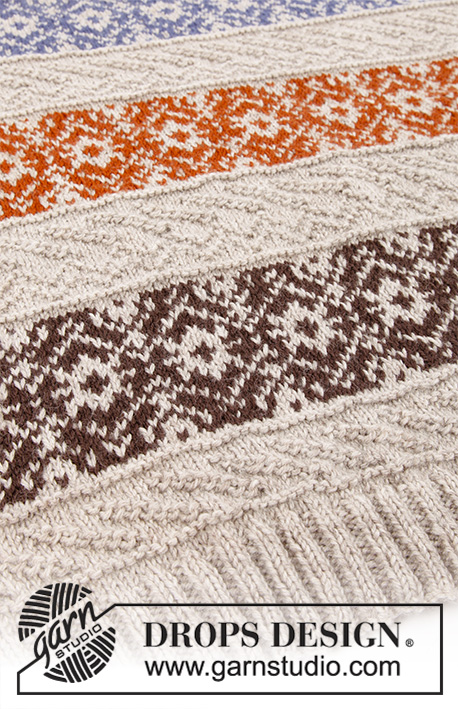
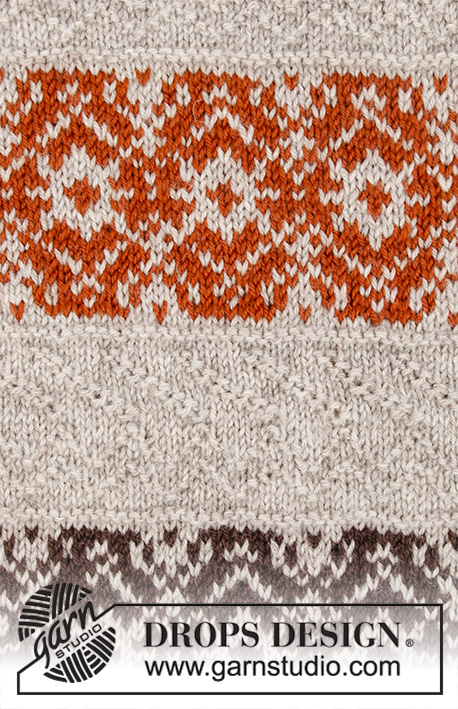

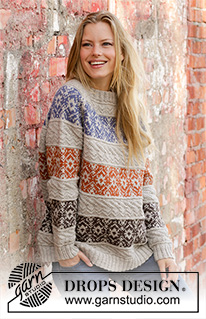
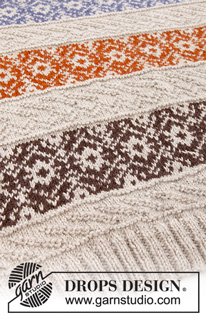




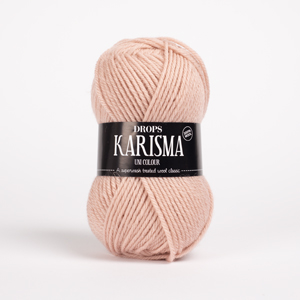



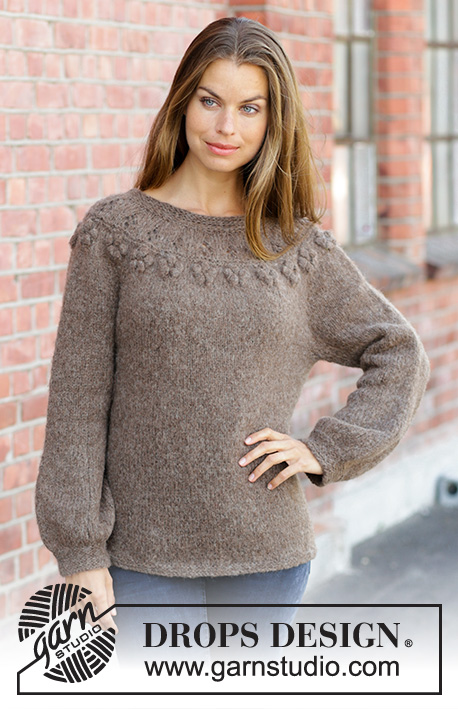
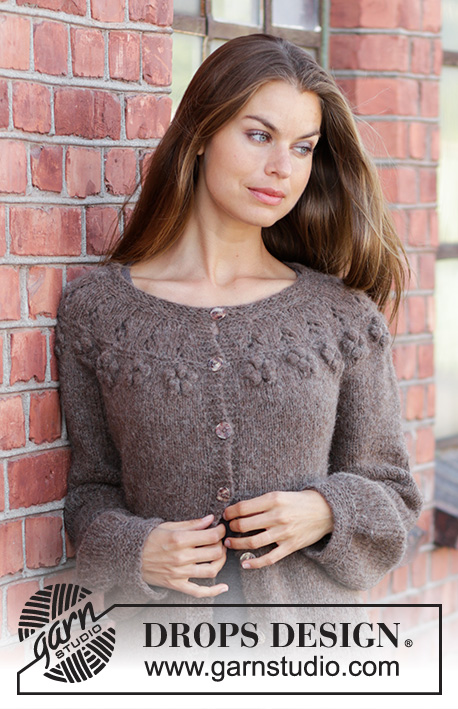















































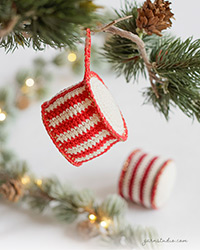





Post a comment to pattern DROPS 197-1
We would love to hear what you have to say about this pattern!
If you want to leave a question, please make sure you select the correct category in the form below, to speed up the answering process. Required fields are marked *.